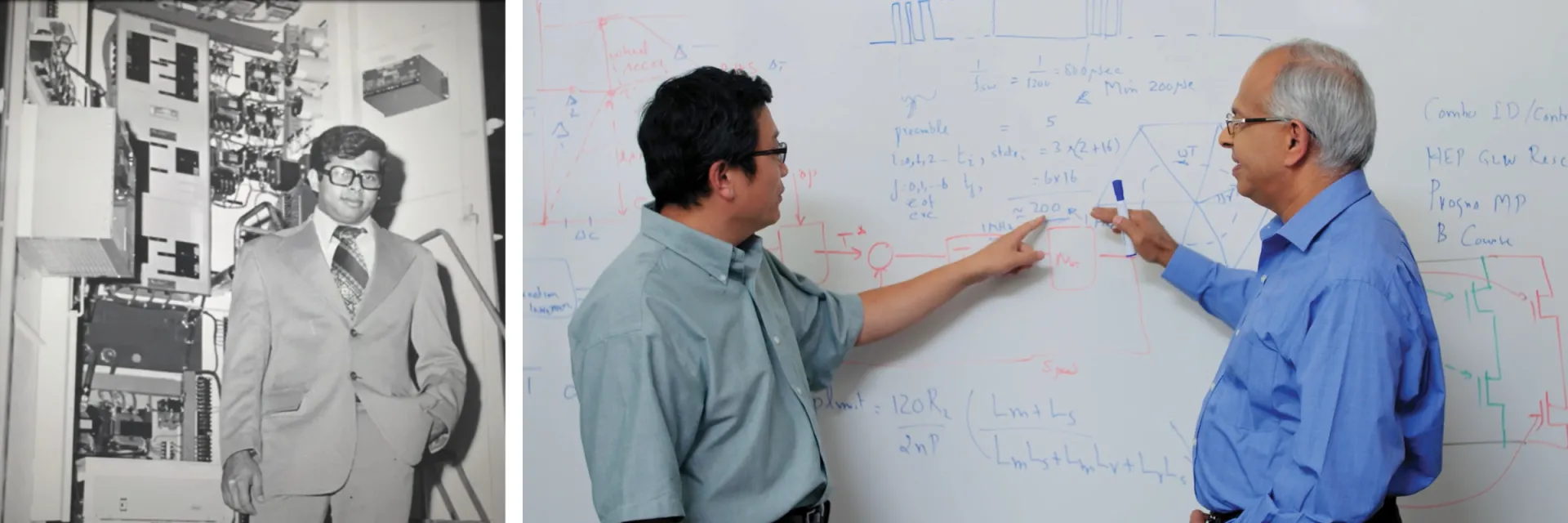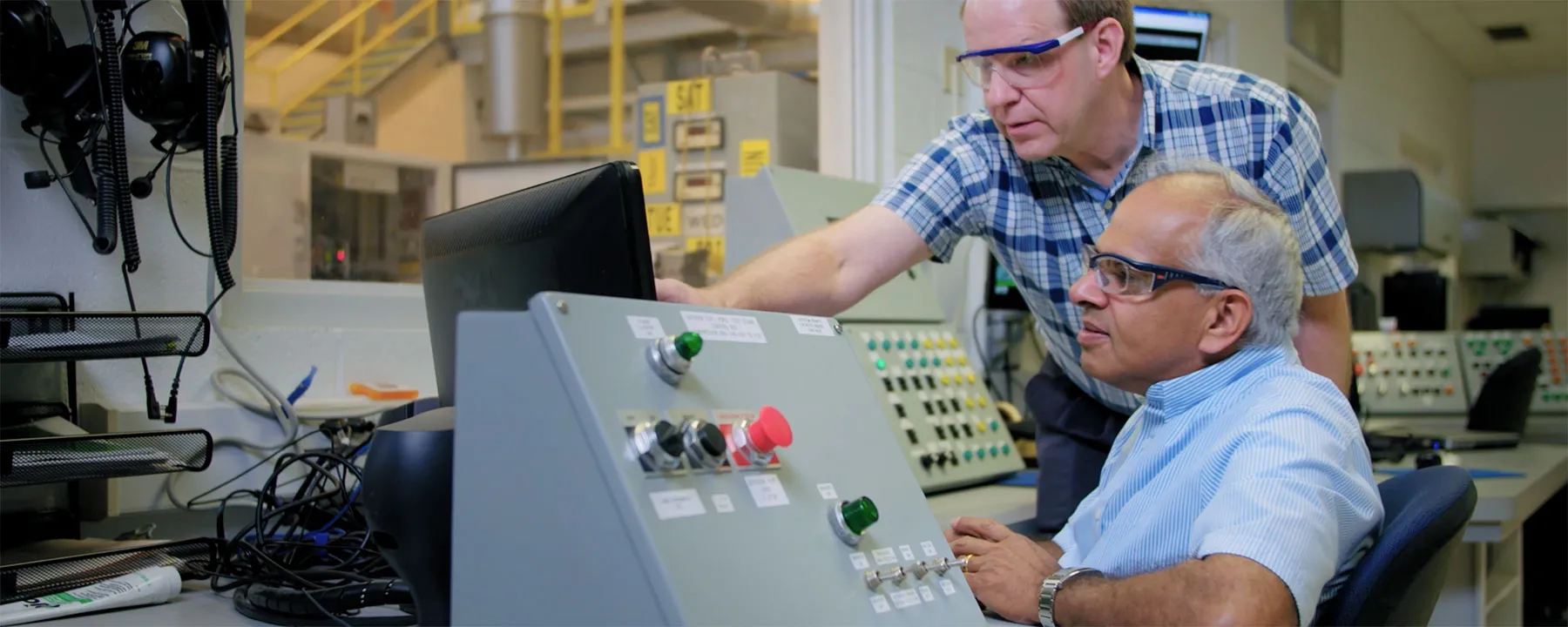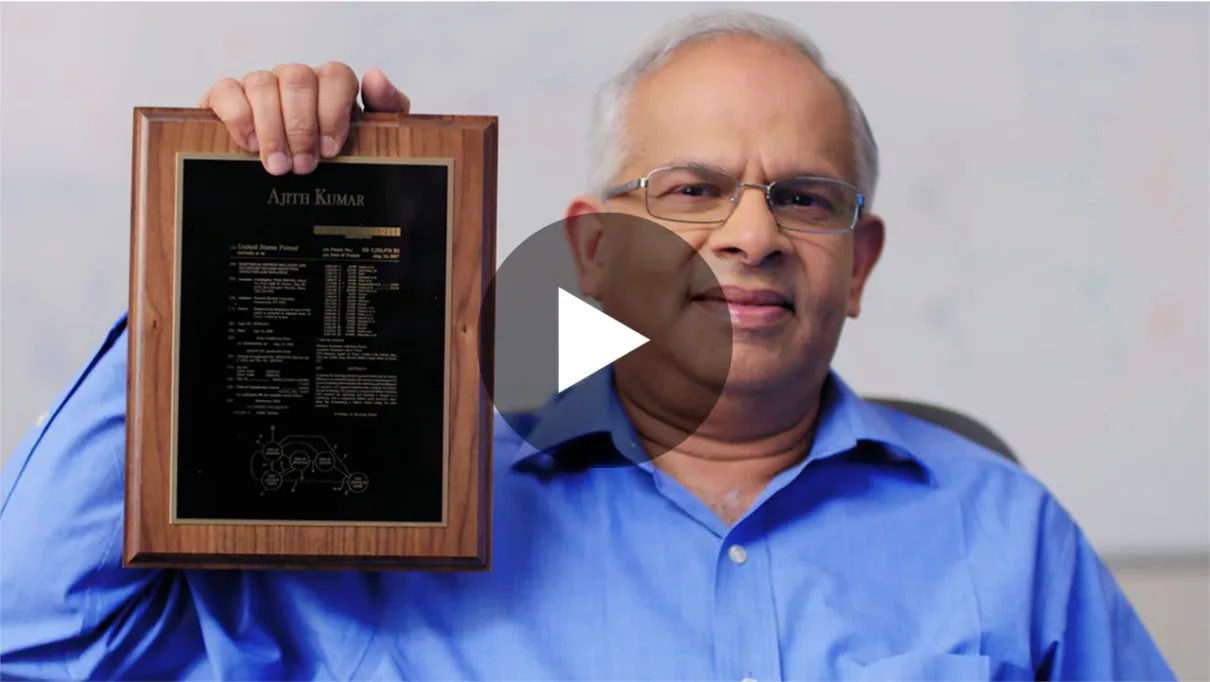A Patented Success
Wabtec has transformed the rail industry for more than 150 years thanks to its spirit of innovation. It started with the company’s founder George Westinghouse, who was one of the world’s foremost innovators with 361 U.S. patents to his name. Wabtec continues innovating today with the next generation of makers, dreamers, doers, and trailblazers. One of those employees particularly embodies Westinghouse’s spirit of innovation. His name is AJ Kumar.
AJ recently received his 362nd U.S. patent, surpassing George Westinghouse’s total. His contributions to the company and the rail industry have earned him the nickname “Father of the AC Locomotive.”
But for AJ, the art of innovation has never been about his personal patent count, but rather the impact his inventions have made. In this regard, his work speaks for itself. Whether it is making AC propulsion systems the standard for the rail industry; creating software that provided “cruise control for trains”; or inventing battery systems for a new era of battery-powered locomotives; AJ’s dedication to “what’s next” has literally changed the trajectory of how locomotives perform, and Wabtec moves the world.
AJ shares his insights and advice from a celebrated 45-year career.
Q: Do you remember your first patent?
Yes, I do. I developed a power factor correction control system for a GE electric locomotive we shipped to Mexico. The new system boosted the power factor, therefore improving the power of the locomotive.
Q: Out of all the patents you have received, which is your personal favorite?
Hey, that’s like choosing a favorite child. But seriously, two patents come to mind. One of them has to do with running two drives to control one mining traction motor (dual IGBT drive), thereby facilitating higher tonnage trucks. This innovation kept us ahead of our competition and proved the mainstay of our mining business for many years. To provide just a little more detail, it made existing locomotive/mining parts work in conjunction with complex timing controls (measured in nanoseconds) – a great challenge for me and lots of fun at the same time.
My other favorite was a dynamic weight management system for our C4 locomotives. It took the very simple idea of using mostly familiar parts to make a 4-axle AC locomotive perform just as well as a 6-axle DC locomotive – and with higher reliability! The simplicity of the idea, its elegance, elevates it to my “favorite” status. I also remember a CEO commenting that this innovation delivered one of the highest returns on investment in history, if not the highest.
Q: Which of your patents have made, or will make, the most significant impact on the railroad industry?
I suspect the series of patents connected to the AC individual axle control and Trip Optimizer have made the most impact. The first series boosted the tractive effort of AC locomotives, enabling railroads to dispatch higher tonnage trains with the same number of locomotives, thereby increasing productivity. The second series delivered significant fuel savings and enhanced the consistency of each trip.

Q: What is the process for successfully securing a patent?
I’ll be honest, there’s no grand “process” per se, but I can share some insights common to successful patents. First, look at all the new technology around you and imagine a fresh way you can apply it to improve the lives of your customers, or start with any problem that resonates with customers. If you don’t have direct access to customers and what they are saying, listen attentively at meetings and closely monitor industry publications and news. Once you identify a worthy problem and solution for it – whether individually or in collaboration with others – that will make a reasonable impact, the patent process is relatively simple and pain free.
Q: Is failure an important part of innovation? What have you learned from your mistakes?
Many of my ideas never became patents, and some that did never prove commercially successful. Inventors never know which ideas will make the biggest impact, so we must keep them coming.
And failure can be productive and give life to new, successful ideas – for yourself and peers. Once, I worked on a flywheel bus that did nothing commercially, but a colleague of mine leveraged that concept to invent the Dash 8 locomotive cranking system. Another good example: hybrid locomotive applications ideas (which went nowhere in the early 2000s) ultimately led to a noteworthy successor, the commercially successful Trip Optimizer.
Q: Most people have had good ideas in their lifetime, you have turned good and great ideas into hundreds of patented products/processes. What's the difference?
Luck, for sure. But let me offer a more objective response. Once you identify a potentially significant solution, don’t give up on it – keep trying! My C4 solution came after eight years of presenting it to many different managers in many different ways. Persistence matters. Also, work the different avenues available to you: get your solution into the STRAP process, work through the chief engineer’s office, or bring it to your product manger’s attention. You’ve heard the phrase “knocking on a lot of doors?” I’ve done it, and it works.
Q: You have a reputation as a strong mentor. What do you try to teach young engineers?
I tell engineers to think about the context of their work and to always think at a slightly higher level than the task they might be focused on. I also encourage them to find out how the end user will actually use their product. Knowing that is gold.
Q: Maybe we should have asked you this first, but what attracted you to railroads? Did you have a train set as a kid?
I never dreamed of railroads or played obsessively with train sets. I mentioned luck earlier, and I meant it. Getting involved in this beautiful business was just a random event. In the 1970s, I applied to GE (not transportation) for a position, and GE Transportation replied. The rest, one might say, is history.

